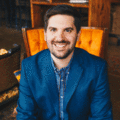
There is hardly a week that goes by that I don’t get asked the question: “So what exactly are you? Are you a chiropractor, physical therapist, or a strength and exercise specialist?”
I think the best way to answer the question would be to explain my history with the Prague School of Rehabilitation, which is part of the University Hospital in Prague, Czech Republic.


In the Czech Republic, I am considered a physiotherapist.
Physiotherapists assess the patient, then plan and provide treatment programs that aim to restore function or minimize dysfunction after disease or injury. This is achieved through a combination of manual therapy, movement training and the use of physical and electrophysical agents.
The Prague School of Rehabilitation has its roots in neurology and really began to be promoted after World War II. For those of you who have seen me at Lincoln Performance and Sports Medicine, you know how much we talk about the nervous system and how that influences our body and the way we move and ultimately experience pain.
Students taking the program in Prague, as I explain, receive a much more thorough education than what is typically offered here in the U.S. Students graduate with a deeper understanding of the central nervous system, its functions and how to assess it. They learn rehabilitation from an understanding of how the brain controls everything we do — not merely how to put a “band-aid” on the site of pain. Also, they have an understanding of when and how to use manual techniques such as joint adjustments — not as the only tool, but one tool among many.
To put it simply, I would describe physiotherapy as a chiropractic and physical therapy mix on steroids.
Since taking my first class through the Prague School in 2007, I have spent thousands of hours learning, researching and practicing their teachings. I have also had the privilege of spending four weeks working and presenting in the rehabilitation department of the University Hospital. (Side note: If anyone has questions about what socialized health care looks like in practice, I have experienced it first-hand as well as health care in China and Canada.)

One of the most interesting things about the science and teachings of the Prague School is that for many years its development was largely unshared with the rest of the world. This was due largely to the country being under communist rule as well as being a small country with a language that isn’t widely known. It wasn’t until the country’s revolution when it moved away from communism and some of the work was translated into English that the rest of the world began to see this information in the 1990s.
At this point, there isn’t a chiropractic or physical therapy school in the U.S. and even around the world that hasn’t been influenced by the Prague School of Rehabilitation and it’s rehabilitation approach, “Dynamic Neuromuscular Stabilization (DNS).”
In addition, Prague School is one of the most popular sources of continuing education worldwide, and I am proud to be a lead international instructor. Since 2012 we have instructed nearly 30,000 health care professionals in physical therapy, chiropractic, athletic training, yoga, pilates, and strength and conditioning. In 2019 alone there were 352 courses taught in 53 different countries. I think these numbers are a testimony to the quality of the work and the results it produces with the clients each professional works with.



Due to its effectiveness, the Prague School (and DNS) has become an extremely sought after credential-building program for professionals who work in college and professional athletes.
At the end of the day, my goal is to make the most accurate diagnosis possible and apply the most effective treatment I know — it doesn’t really matter what my title is.

DR. TYLER IDEUS
Contact Me



